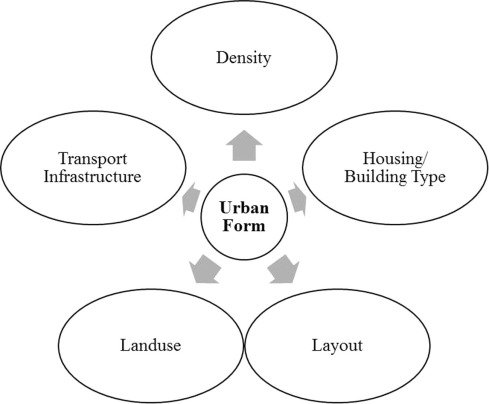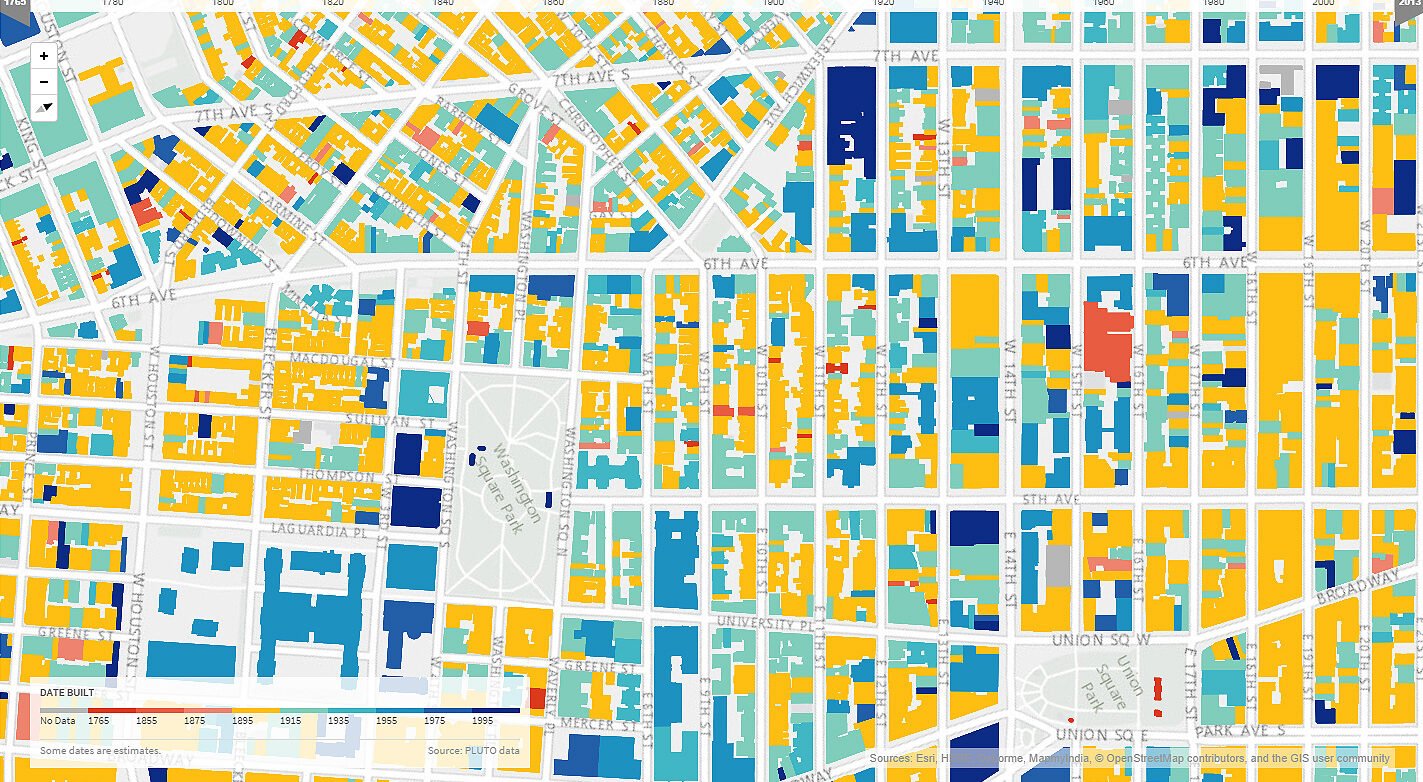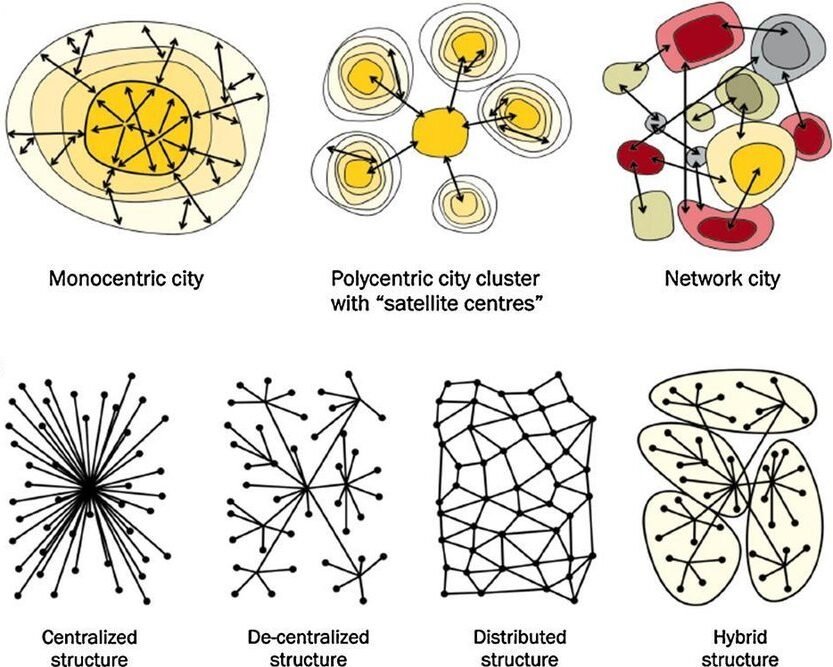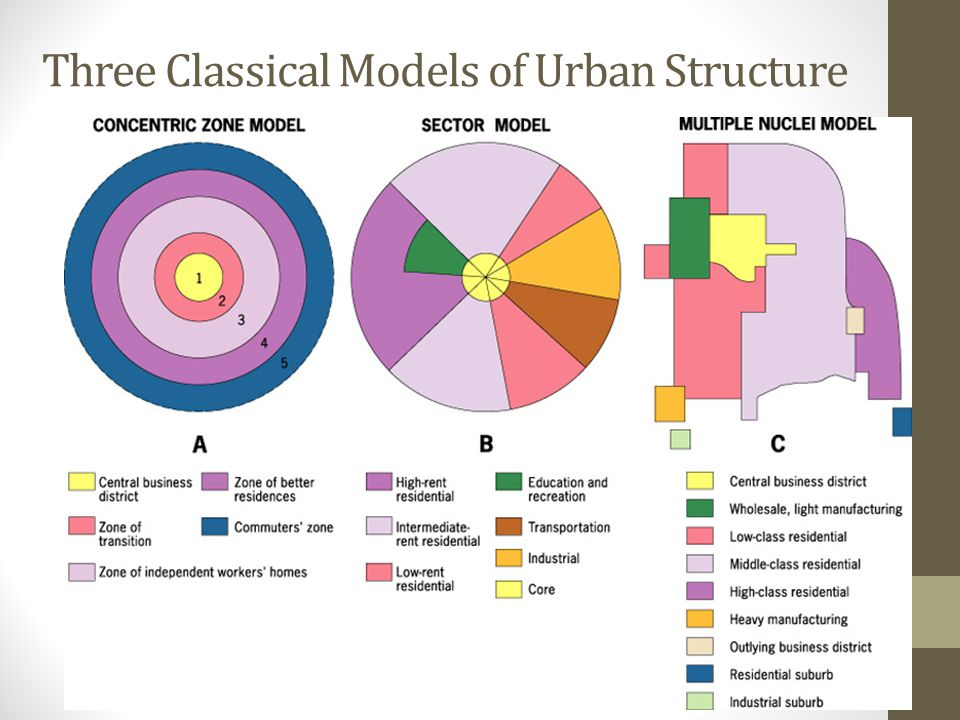An Overview:
City’s performance depends upon the complex functions of the diversity of urban forms. A city is a group of people and varied built structures within a geographical area, so organized as to facilitate the exchange of goods and services among the residents and with the outside world. The growth of migration led to the development of settlements to villages, villages transformed into cities, therefore builds urban areas for the inhabitants of the cities. Cities not only evolve through regulatory forums or town planners but also keeping an eye on the population needs, social relations and lifestyle. “Without people, activity, energy, movement, trade and so on, there would be no place in the urban areas; only space remains empty, dull, soulless, dead and inhospitable space. City’s physical characteristics refer to urban forms – the pattern of the layout of the city, physical infrastructure, imprints of the urban transport system. Urban form ranges from a localized scale; features like building materials, fenestrations, and facades, to a broader scale; like housing type, street type and spatial land use distribution. This introduces to ‘Urban Structures’ in the rubric urban theories and practices.

What are Urban Structures?
Cities are not the only a collection of buildings and people; they also exhibit functional structure as places of commerce, production, education, hospitality and much more. This array of services is arranged in the relation of one another. Urban Structure refers to sociological structures of urban communities, to the spatial configuration of land uses at a broader scale, to the relative location of residences and workplaces, to the spatial distribution of economic activity, to the geography of population density and so on. Urban structures are evolved through many forms – social, economic, political, cultural, imaginary, and the built environment can have multiple dimensions – spatial, organizational, administrative and racial.

The urban structure comprises of three elements – Space, Movement and Building form.
- Space: It is the natural features, landscape and underlying topography within the area that influences look and character of districts and neighbourhoods upon the land base.
- Movement: The accommodation of transportation infrastructure and services
- Building Form: The varied building types defined by its physical scale, mass, orientation and height interplays with spaces and defines streets which creates a city’s skyline.

The emergence of Structures of cities
The concept of a city in antiquity was different from medieval and modern times. The distinct features have evolved over time and vary significantly in time and space. The growth was irregular in form, sensitive to changes in the habits of people, and dynamic in character. More than the structures, the dwellings of the people mark the different culture of cities.
The city is termed as a market place for ‘Max Weber’ making ‘market’ as the focal point of the city, a centre for the exchange of goods in the pre-industrial era. Further, the development of transportation and money, systems transformed this barter to a retail enterprise known as modern business centres. Each city has its own internal regularities for its growth which include both physical as well as human aspects – the land use pattern and residential settlements. The city constitutes a collection of houses that people inhabit in, shops in which they work in, the streets they traverse and the places in which they trade creating land-use distribution considering all such aspects.
Industrial Revolution is the turning point to the urban development that attracted labor force and created market for their produce. These forces were analyzed by Charles Colby in the form of movement of people as centripetal and centrifugal forces. These forces influence the urban structures of the city.
- Centripetal Forces: The results of a number of attractive qualities of the central portion of the city. Different types of centripetal forces – Site attraction, Functional Convenience, Functional Magnetism, Functional Prestige and Human equation.
- Centrifugal Forces: These are not opposing forces but are made of merging influences, a desire to live in one part or an urge to move to another part like suburbs. Different types of centrifugal forces – Spatial Force, Site Force, Situational Force, Social Evaluation Force, Status and Human Equation.

These forces lead to urban processes of centralization, decentralization, centralization, concentration, de-concentration, residential segregation, dominance, invasion and succession. The internal structure of the city refers to location, arrangement and interrelationship between physical and social elements in the city. The form and structure of the modern city is the result of numerous economic, social and cultural factors operating through many decades since evolution. Based on these forces and processes, urban planners have developed several urban models that explain urban patterns where the distinct type of people and businesses tend to exist within an urban setting.




